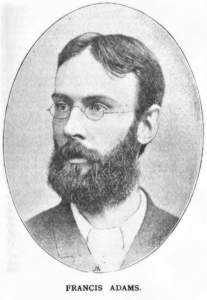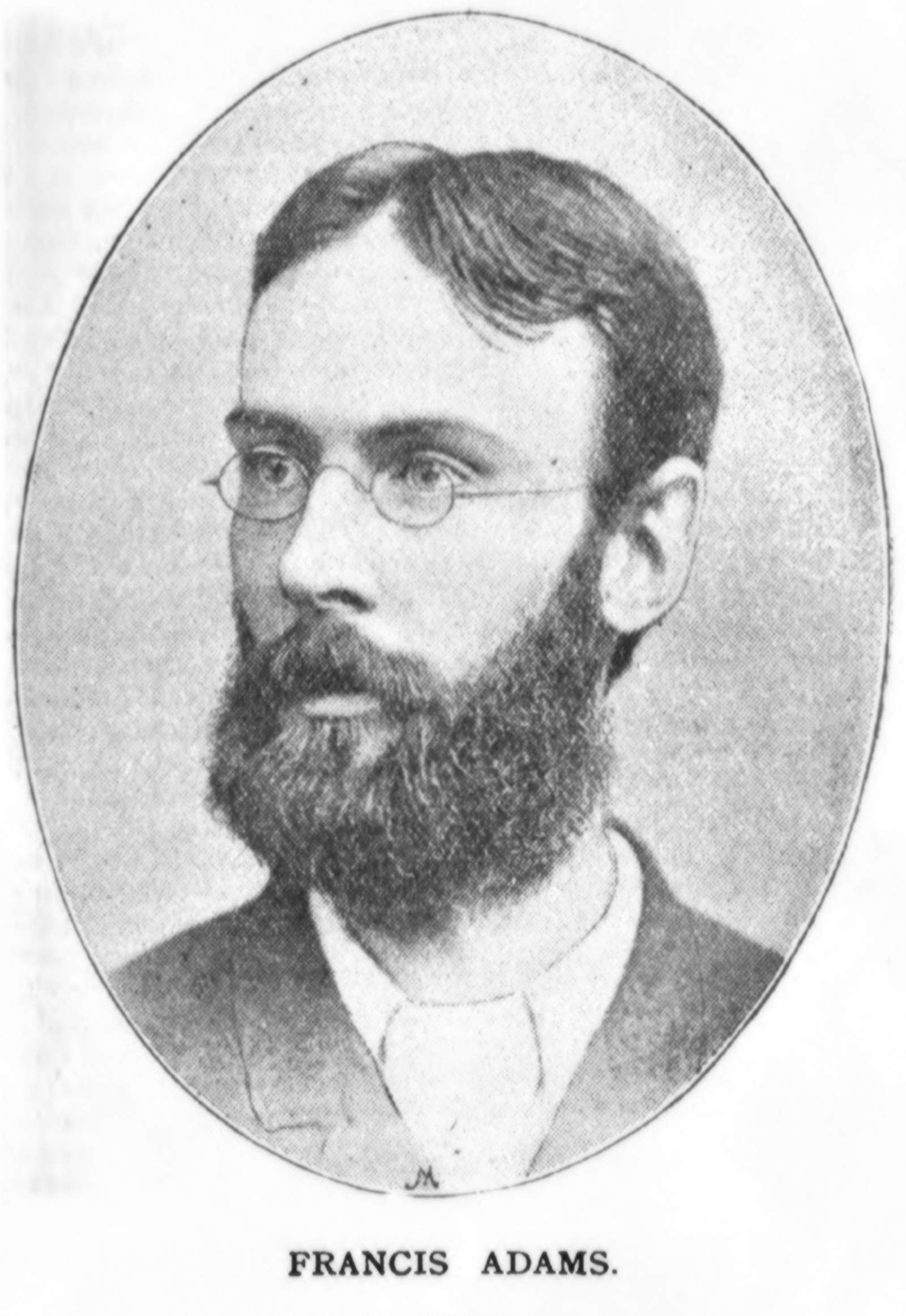
Name: Francis Adams (visitor)
Epoch: Late 19th Century (the \'Long Nineteenth Century\')
Grouping Field: Literature (Fiction)
Location Grouping: Individual\'s Residential Location
Map Coordinates: 27°27\'58.2\"S 153°01\'56.9\"E
Years At Location: 1886, 1888-1890
One Historical Setting: Mr. Francis William Adams, lodging somewhere in Brisbane [TBA] (1886)
Francis Adams arrived in Brisbane in July 1886, from Sydney. After travelling in 1887 to China and Japan, he returned to Brisbane and worked both for the Brisbane Courier and William Lane’s Boomerang. During his time in Brisbane his work achieved contemporary fame, with his bitter anti-imperialist and anti-capitalist collection of poems, the most noted being, ‘Songs of the Army of the Night’. The collection appeared in Sydney in 1888, and later ran to several London editions, the last in 1910. He returned to England in 1890. Literary critic Henry Kellow described Adams as ‘the first Australian missionary’ of the ‘aesthetic gospel’. Biographer Murray-Smith said that Adams was “the only active intellectual there who brought something of ‘modernity’, of sophisticated European modes, to the discussion of Australian problems.” Adams had strong literary associations with the Europeans Matthew Arnold, Frank Harris, Henry Salt, Bernard Shaw and W. M. Rossetti, and also with William Lane and other Australian radicals.
Francis Adams added a certain cultural characteristic to the labour movement, which William Lane did not possess; however, he shared the fateful flaw of Lane, an expectation of perfection in the cause with unsanctified wrath. Stephen Murray-Smith writes of Adams:
“Adams was a fervid disciple of Matthew Arnold (with whom he corresponded) in the quest for Hellenic perfection and in the battle against the philistine, though he did not always find it easy to reconcile the search for the best in art with his passionate sense of literature as a revolutionary weapon…He was the only active intellectual there who brought something of ‘modernity’, of sophisticated European modes, to the discussion of Australian problems”
Indeed, Adams was almost alone in pleading for justice for the Chinese and the Pacific islanders against Queensland Labor.
S. Murray-Smith, ‘Adams, Francis William (1862–1893)’, Australian Dictionary of Biography, National Centre of Biography, Australian National University, http://adb.anu.edu.au/biography/adams-francis-william-2865/text4085, published first in hardcopy 1969, accessed online 3 November 2017. This article was first published in hardcopy in Australian Dictionary of Biography, Volume 3, (MUP), 1969.
Buckridge, Patrick; McKay, Belinda. By the Book: a Literary History of Queensland, University of Queensland Press, St. Lucia, Qld, 2007.
Evans, Raymond. A History of Queensland, Cambridge University Press, Port Melbourne, Vic, 2007.
Hatherell, William J. The Third Metropolis: Imagining Brisbane through Art and Literature, 1940-1970,University of Queensland Press, St. Lucia, Qld, 2007.
Palmer, Vance. Life and Death of Francis Adams, Angus & Robertson, Sydney, 1954.
Tasker, Meg. Struggle and Storm: The Life and Death of Francis Adams, Melbourne University Press, Carlton Vic, 2001.
Turnbull, Clive. These Tears of Fire: the Story of Francis Adams, Hawthorn Press, Melbourne, 1947.
Francis Adams. From The Labour Annual (1895) Joseph Edwards Ed., Manchester, London, Glascow. [https://commons.wikimedia.org/w/index.php?curid=18490816]
